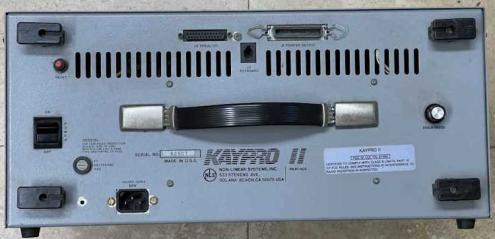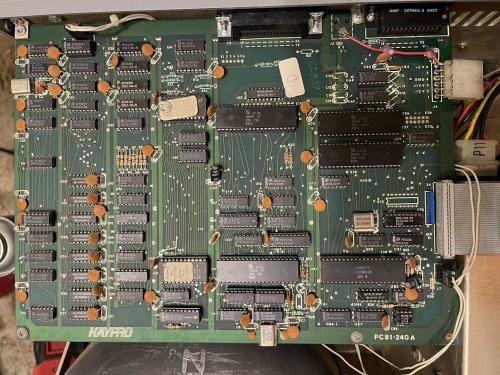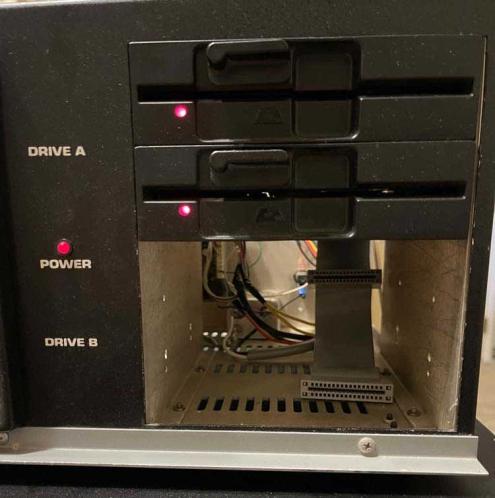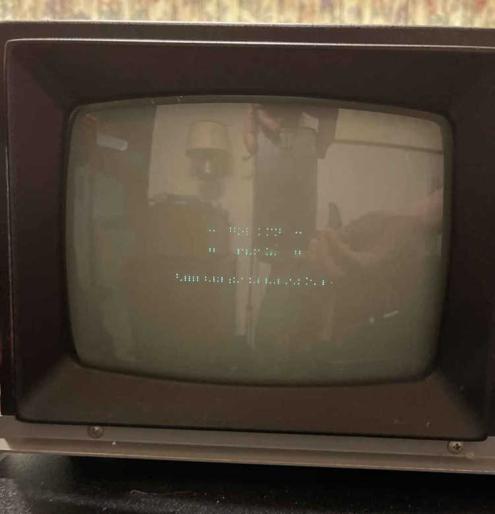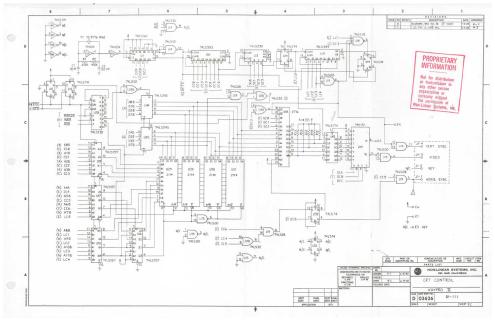- 2023
- Apr
- 23
Returning a Kaypro 2 to it’s original owner… but,
I’ve had this Kaypro 2 Luggable Computer since about 1993, I believe. I purchased it from a fellow college student with the disclaimer that if I ever needed to get rid of it, he would like it back. Since it’s been 30 years, I figure it’s time for it to go back home since it’s not doing anything here at the pygg pen.
A little history…
Kaypro, aka Non-Linear Systems, is credited with manufacturing one of the first widely available DVMs in the world. Using a relay driven wheatstone bridge, it was a concept that would have been difficult earlier, but transistors made it easy enough (if expensive) to make. NLS continued the test equipment line, making voltmeters, panel meters, scopes, and other items. Non-Linear Systems still exists as an entity, making panel voltmeters as usual. Find them here https://nonlinearsystems.com/.
In the 80s, however, NLS decided to get into the nascent home computing market with their entry, the Kaycomp. Named after the founder Alan Kay, these Ferguson Big Board clones rapidly gained a following due to their simple robustness and the fact that you received an entire library of software with them - OS (CP/M), Word processing, spreadsheet, programming, games - the machine was ready to go out of the box. Businesses loved them, and they were reasonable enough that home users bought them. Kaypro went on to make several offerings including hard drive models, and even a PC based model on the luggable form factor.
Kaypro eventually succumbed to that which kills all PC makers. PCs became commodity devices, and their IBM-PC based offerings weren’t any different (but they did manage to get a 286 machine out the door before IBM released the AT!) - and they released some machines that had crippling issues. The 90s saw bankruptcy and closure of the computer manufacturing, with test equipment continuing.
The Kaypro name has been resurrected a few times over the years, but has never stuck, and has faded to legends of a world before the IBM compatible devices took over.
And now, the main(board) feature.
This machine suffered a failure some years ago where the 8048 keyboard decoder went bad, got hot, and destroyed the relatively narrow +5V supply line. I, um, fixed it (yeah) years ago, but did a terrible job. The first order of business was to fix what younger me did. That was as easy as removing the wire fix, cleaning everything up, and re-placing it with some hot glue to keep things in place. Easy enough, and that’s done.
(Just as a note, the 8048 was a common microcontroller used as a keyboard decoder, and often had a mask-program ROM onboard for the decoder portion. Replacing it was impossible unless you had a pull from another machine handy.)
Next thing was to give things a good cleaning. The connectors that I could access got a squirt of DeOxit for metal-to-metal contacts, and the scratchy brightness control got a squirt of DeOxit for controls. All good, and the brightness pot now feels nice and smooth. A dust removal and the inside looks good.
Of note here is the mainboard ROM is populated with a Micro Cornucopia Pro-Monitor ROM. Micro C, as it was fondly called, was a magazine/tech house dedicated to the Big Board machines, and later it’s clones like the Kaypro and Xerox devices. Micro Cornucopia manufactured several enhanced ROMs for these machines, and this one is no different. I believe this one allows the use of DSDD drives (instead of SSDD,) as well as provides the ability for 4 floppies. While it looks like I or someone may have modified it to do such, I can’t remember if this had the ROM onboard when I got it, or if I put it there from one of my other machines. It will simply remain lost to the mysteries of time.
Also of note: There’s a keyboard in here. I do not remember putting that in, but again, it must have come from one of the many junkers I purchased over the years. Another mystery.
But now, the but…
A quick inspection didn’t show any noticeable physical damage.
A few quick checks didn’t reveal any shorts or other electrical problems. So, plug into a fused outlet and…
The Kaypro “Grrrrrrk!” of the drives spinning up greets me. All LEDs are lit. The drives are running. That’s good - the drives on this spin constantly and load the head on and off the disk during access. It’s a way of getting quicker access, but you’re spinning the disks all the time.
However, there’s a problem. Not surprising after sitting for 20+ years.
I know it’s hard to see, and I apologize. The screen has multiple issues. The first, that of the characters are partially formed. The second, and the problem which prevented me from troubleshooting the first is the screen is dim and goes dark.
Since the brightness is controlled by an analog pot, this is probably indicative of something in the power supply failing. I turned it off immediately so as not to destroy potentially unobtainable parts.
We can theorize about the malformed characters without power.
Video is generated with some RAM, a character EPROM, and a bunch of TTL glue. There are several things that strike me as potentially being bad here. Those are (but, not limited to of course!):
- A bad character EPROM. These can fade over the years.
- Bad RAM.
- A bad TTL part.
- One of the socketed chips just needs pulled and reseated.
- Data from the monitor EPROM is bad, for the same reason as above.
- An interconnect problem between the mainboard and CRT.
.
To be fair, this would probably be easy enough to track down with a logic probe or scope, but I’m unwilling to run it for any length of time because of the screen going black. I don’t have any CRT device troubleshooting tools left, and I don’t want to destroy the device to a point where I can’t get a part.
I’m not sure how the original owner wants to use if (if at all,) so it stays in the state it’s in.
A larger version of the schematic: https://wereboar.com … %20Schematic.jpg.zip
